
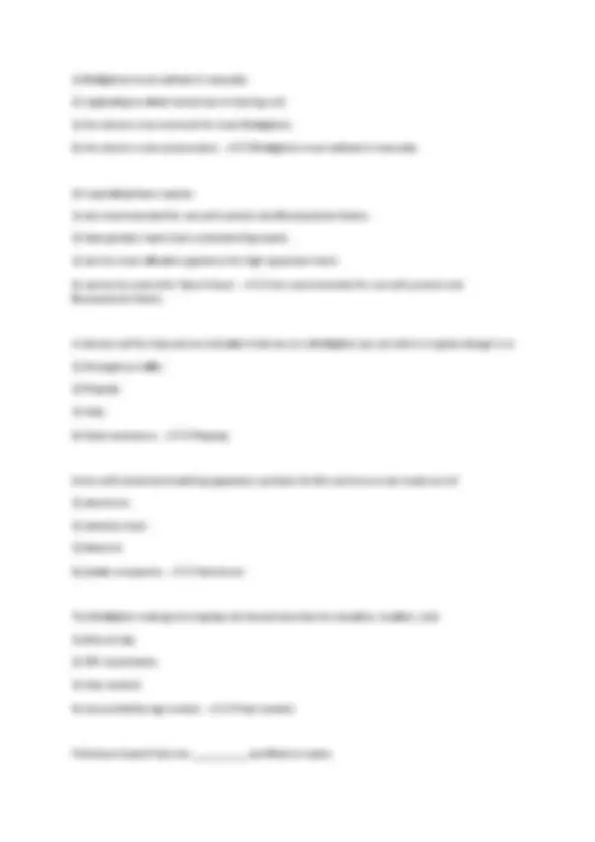
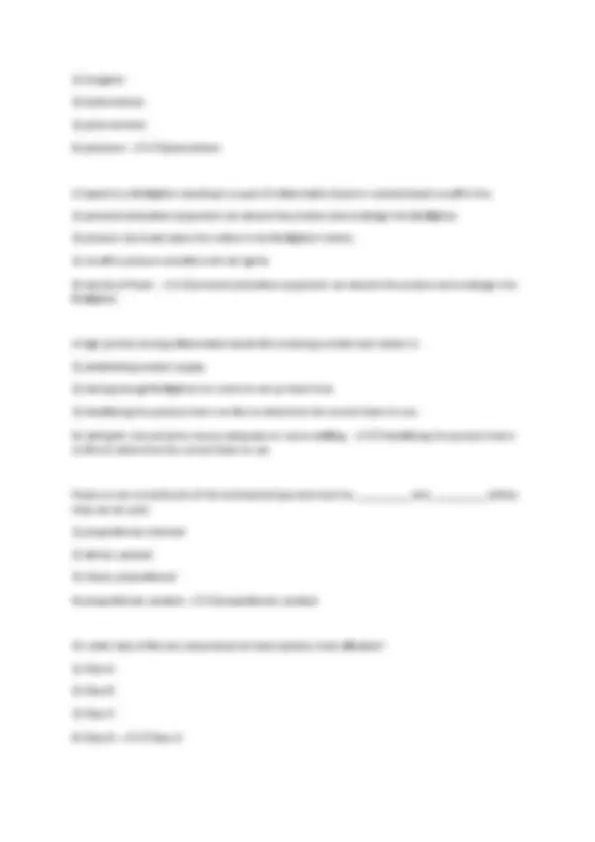
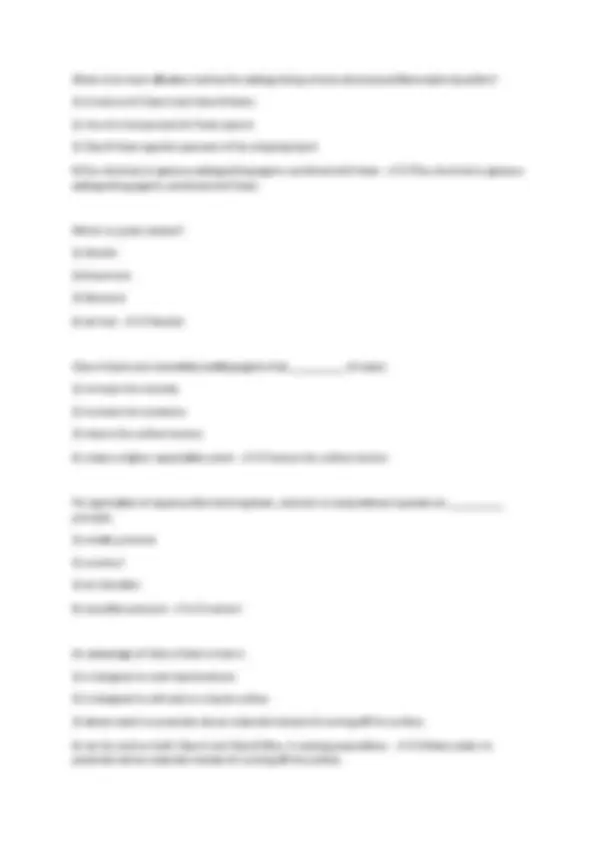
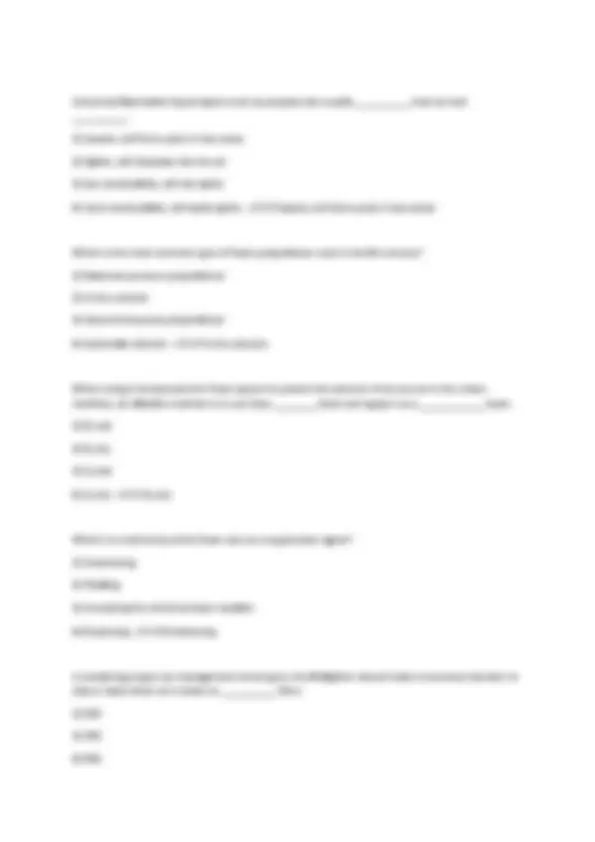
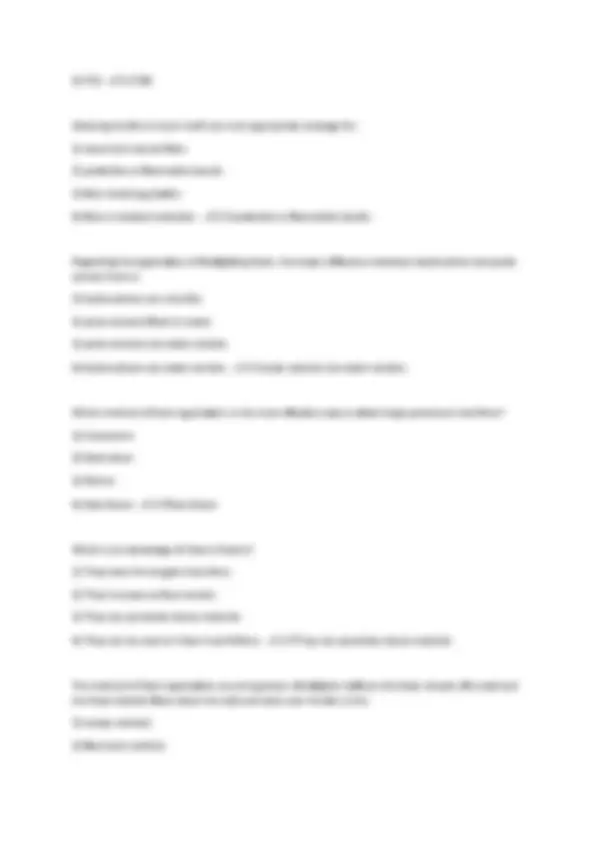
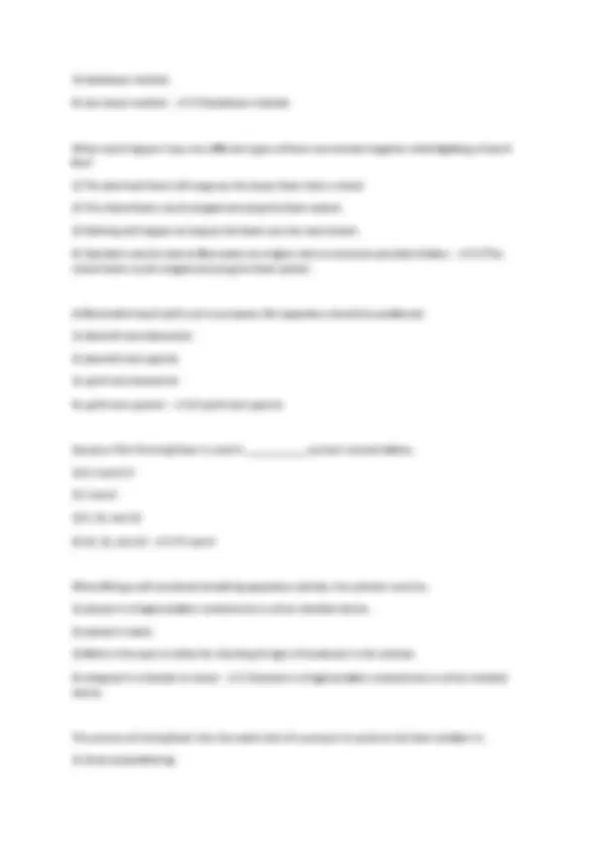


Study with the several resources on Docsity

Earn points by helping other students or get them with a premium plan


Prepare for your exams
Study with the several resources on Docsity

Earn points to download
Earn points by helping other students or get them with a premium plan
Community
Ask the community for help and clear up your study doubts
Discover the best universities in your country according to Docsity users
Free resources
Download our free guides on studying techniques, anxiety management strategies, and thesis advice from Docsity tutors
The maximum length of hose that can be used in the discharge side of an in-line eductor is: 1) 300 feet. 2) 250 feet. 3) 200 feet. 4) 150 feet. - ✔✔✔150 feet. Which action is appropriate with respect to foam safety? 1) Use a solid bore nozzle for Class B fires. 2) Direct foam streams into the spill or f
Typology: Exams
1 / 12

This page cannot be seen from the preview
Don't miss anything!







The maximum length of hose that can be used in the discharge side of an in-line eductor is:
What is the most effective method for extinguishing a three-dimensional flammable-liquid fire?
Unburned flammable liquid vapors such as propane are usually __________ than air and __________.